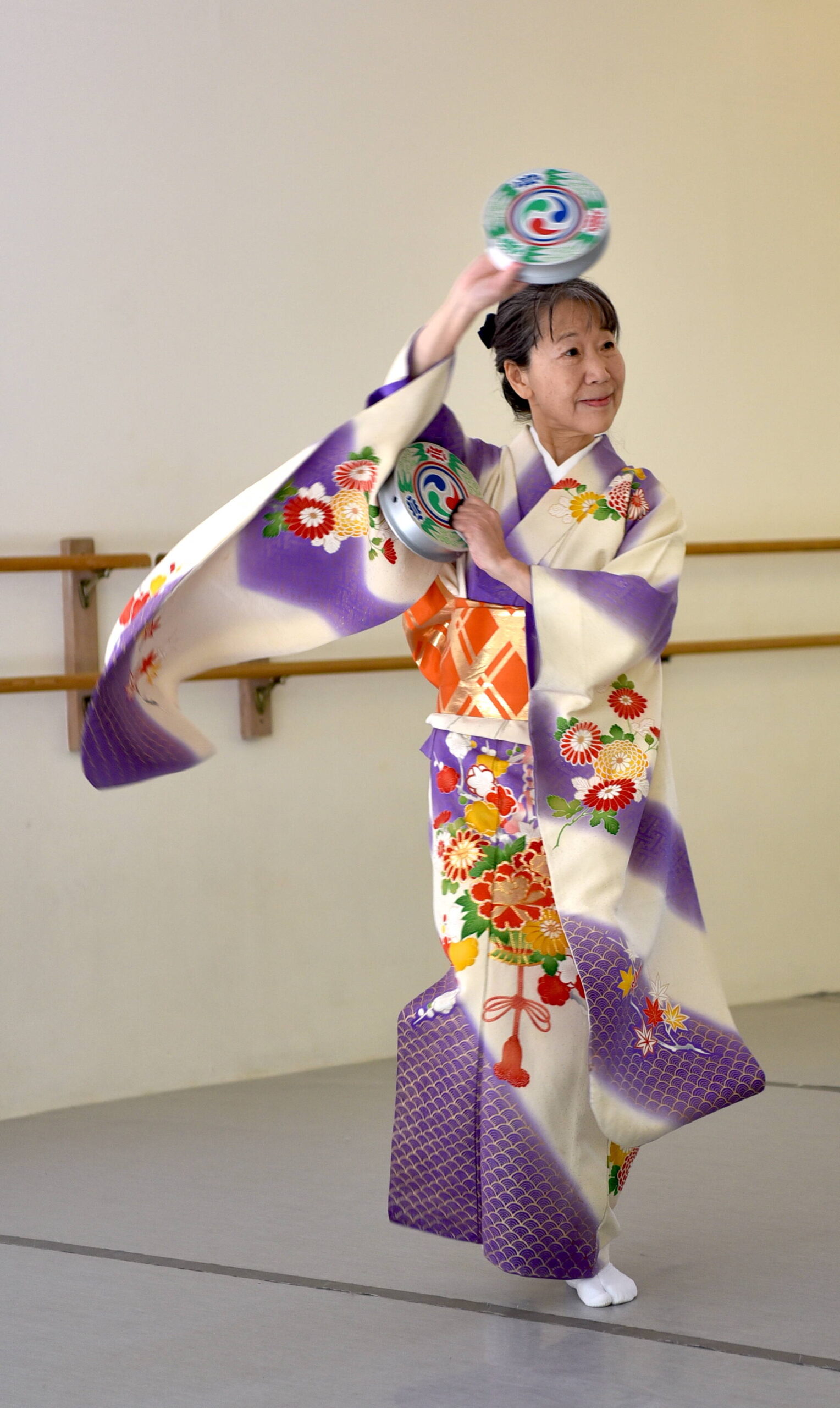A unique exhibition at Bainbridge Dance School brought the traditional art of Nihon Buyo alive as Kaya Yamazaki, a master artist adorned in a silk kimono, weaved stories with her fan, providing attendees with an insight into the classical form of Japanese dance.
The session attracted many attendees, for whom this was their first exposure to Nihon Buyo. Yamazaki shared her decades of expertise as a performer, teacher and anthropologist. Yamazaki explained the importance of a wooden floor and the intricate use of the Japanese folding fan “sensu.”
“Students are taught to start their lessons by cleaning the floor. It is a percussive instrument. It’s hollow inside to create rhythmic patterns that come from the tradition of priests who communicate with the earth for good harvest by stamping on the floor,” Yamazaki said.
Foot stamping is an essential element of Japanese dance, including many up and down movements from the floor because it’s repeated hundreds of times a day—each stomp, a dialogue with the earth, each wave of the fan, a tale unfurling.
Dance floors are so essential that groups are known to ship them for international performances.
Yamazaki, a holder of a master artist license in Nihon Buyo and creator of the Yamazaki Method™ of Classical Japanese Dance, told of its history and evolution. She presented two solo performances, one from a Kabuki dance and another dating back to 1820 when a Shirabyoshi dancer entertained people on a small boat on a lake, giving a broader perspective on the historical significance of Japanese classical dance.
In the sun-filled room, Yamazaki showed the narrative power of Nihon Buyo and pointed out that “gender representation in traditional Japanese dance is very complicated and never binary. This type of dance traditionally saw women dancing in men’s clothing,” telling a story.
Attendees also learned several dance steps, including; “ya ton,” which is the rhythm of mochi tsuki pounding. Participant Sammy McMahon said, “It was way harder than it looks,” emphasizing the complexity of the dance movements. Participants tried on yukatas or kimonos.
Nihon Buyo classes are scheduled through Dec. 10 and are open-level.



